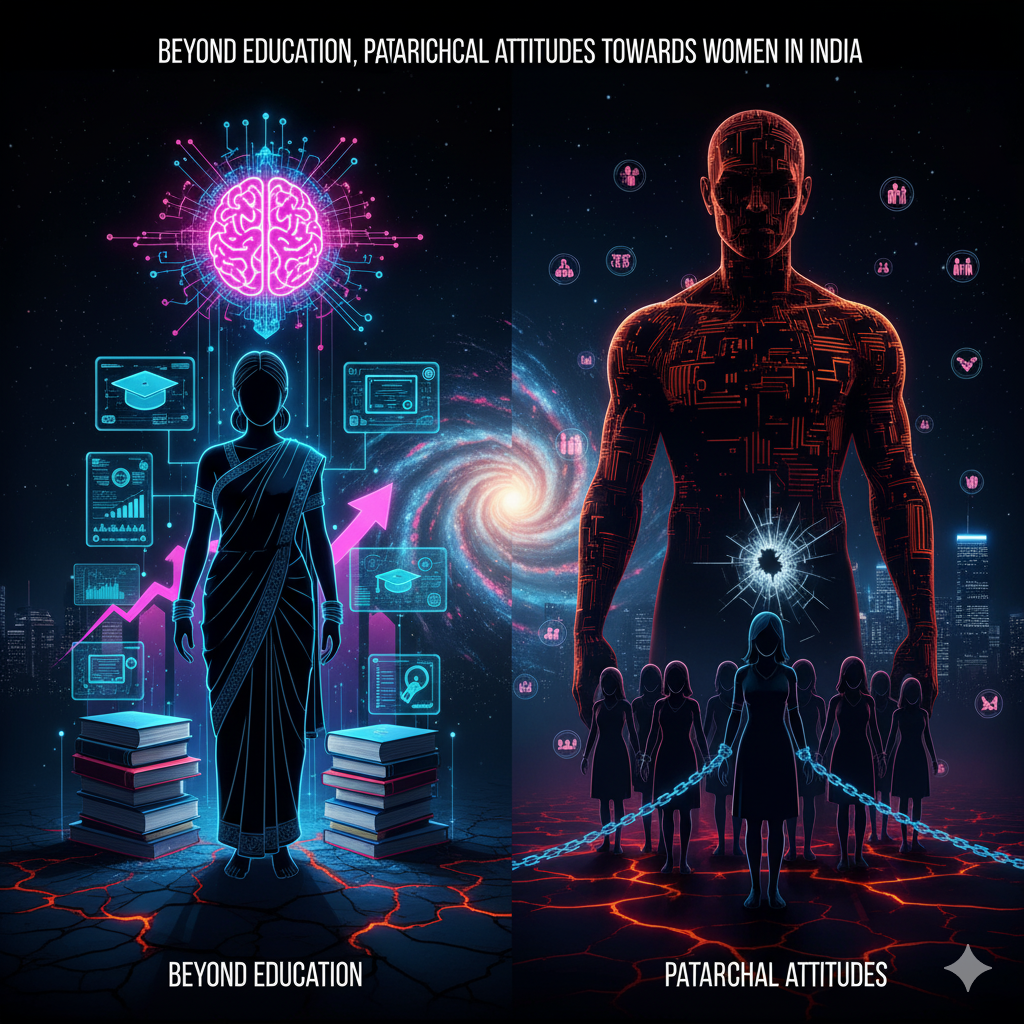The Right to Information (RTI) Act, enacted in 2005, marked a significant shift in the landscape of governance in India. It is often referred to as one of the most empowering pieces of legislation in the country, providing citizens with the legal right to access information from public authorities. By compelling transparency, accountability, and openness in government functioning, the RTI Act has aimed to break down the barriers of secrecy and bureaucratic opacity that have long existed in the Indian administrative system.
The phrase “steel frame” is a metaphor often used to describe the Indian bureaucracy, a system inherited from the British colonial rule that emphasizes rigid hierarchy, centralization, and control. It symbolizes a well-structured but often impersonal and slow-moving administrative machinery that has traditionally been insulated from the public. The introduction of the RTI Act has posed a direct challenge to this bureaucratic structure, forcing civil servants to break free from their traditional comfort zones, be more transparent, and serve the citizens with greater accountability and responsiveness.
This article examines how the RTI Act has forced civil servants to come out of the “steel frame” and become more people-oriented in their approach to governance. We will explore its transformative impact on the bureaucracy, the challenges it presents, and the way it has fostered a more citizen-centric system of governance in India.
1. The Essence of the Right to Information Act
The Right to Information (RTI) Act is a landmark law in India that grants citizens the right to access information under the control of public authorities. The act aims to promote transparency and accountability in government functioning, allowing citizens to seek information about policies, decisions, and actions that affect their lives. Some of the key provisions of the RTI Act include:
- Access to Information: Any citizen can request information from a public authority, which must respond within a stipulated time frame.
- Obligation of Authorities: Public authorities are mandated to proactively disclose information about their functioning, organizational structure, and policies.
- Appeal and Penalties: If an information request is not addressed satisfactorily, the citizen can file an appeal. Failure to comply with the RTI Act can lead to penalties for the authorities.
- Public Interest: Information related to public safety, corruption, human rights violations, and environmental concerns are prioritized under the RTI framework.
The overarching goal of the RTI Act is to shift the governance paradigm from a secretive and top-down system to one that is transparent, accountable, and responsive to the needs of the people.
2. The Steel Frame of Indian Bureaucracy: An Overview
The Indian bureaucracy, often referred to as the “steel frame,” has been a central feature of the country’s governance since the colonial era. The term, originally coined by British officials, refers to the rigid, hierarchical structure of civil services, where decision-making is concentrated at the top, and lower-level employees have limited discretion. The system is characterized by:
- Centralized Decision-Making: Most decisions are made by senior bureaucrats or political leaders at the top, with little consultation with lower-level officers or the public.
- Lack of Public Interaction: The bureaucratic mindset often prioritizes efficiency, procedural correctness, and adherence to rules over responsiveness to citizen needs.
- Opacity: The absence of transparency in the decision-making process, leading to a lack of public accountability.
- Impersonal Approach: The emphasis on rules and regulations often results in a bureaucratic attitude that may be detached from the real needs and concerns of the citizens.
This traditional bureaucratic structure often led to inefficiencies, lack of responsiveness, and a failure to address the needs of ordinary citizens. It also perpetuated a system of entrenched power, where civil servants were often seen as unapproachable and unaccountable to the public.
3. How the RTI Act Has Transformed the Bureaucratic System
The introduction of the RTI Act in 2005 has forced civil servants to adjust to a new, more transparent and citizen-oriented model of governance. By compelling public authorities to be more open and responsive, the RTI Act has had a significant impact on the Indian bureaucracy in several ways:
3.1. Breaking the Culture of Secrecy
Before the RTI Act, much of the functioning of the government remained opaque. Bureaucrats often operated behind closed doors, making decisions that affected millions of lives without any public scrutiny. The RTI Act, however, has forced government officials to operate with greater transparency.
Public officials are now required to disclose information about the functioning of their departments, policies, and the decision-making process. This has forced civil servants to be more mindful of the implications of their decisions and to communicate clearly with the public. As a result, the culture of secrecy that was once prevalent in the bureaucracy has been significantly reduced.
3.2. Increased Accountability and Responsibility
The RTI Act has created a system where civil servants must be accountable for their actions. The act has created a direct link between citizens and government institutions, allowing people to question decisions, seek clarifications, and demand explanations. This has been particularly important in promoting accountability at the grassroots level.
Civil servants now understand that they are answerable to the public. Failure to comply with RTI requests or provide information within the stipulated time frame can result in penalties, legal action, or public embarrassment. This has pushed bureaucrats to adopt a more responsive attitude and be more diligent in performing their duties.
3.3. Efficiency in Governance
One of the notable impacts of the RTI Act is the improvement in the efficiency of administrative processes. As citizens increasingly use the RTI Act to seek information, government departments are becoming more organized in managing records and information. Bureaucrats now have to maintain records systematically and ensure that information is readily available to the public.
Furthermore, the constant threat of RTI petitions has led to a more proactive approach by civil servants, encouraging them to work more efficiently and complete tasks in a timely manner. Public authorities are now motivated to resolve issues faster, as delays in responding to information requests can be detrimental to their credibility and authority.
3.4. Shifting from a Top-Down Approach to Citizen-Centric Governance
The RTI Act has significantly altered the top-down approach of the Indian bureaucracy. Previously, citizens had little or no interaction with the government beyond paying taxes and voting. With the RTI Act in place, however, citizens now have the power to ask questions, demand answers, and hold the administration accountable.
By empowering citizens with the right to information, the RTI Act has promoted a more participatory form of governance, where citizens feel that they have a stake in the decision-making process. This has fostered a more people-oriented approach, where civil servants are more conscious of public opinion and work to align their actions with the needs and expectations of the citizens.
4. The Challenges Faced by Civil Servants Under the RTI Act
While the RTI Act has undoubtedly improved governance, it has also posed several challenges for civil servants:
4.1. Increased Workload
The RTI Act has created a considerable increase in the workload of government departments. Civil servants are now required to spend significant time processing information requests, gathering documents, and responding to queries. This can sometimes lead to delays and inefficiencies, especially when public authorities are understaffed or lack adequate resources.
4.2. Resistance to Change
The RTI Act challenges the traditional bureaucratic mindset, which has historically been resistant to change. Many civil servants find it difficult to adapt to the new demands of transparency and accountability, particularly those accustomed to working in a closed, hierarchical system. The RTI Act has created a need for continuous training and awareness programs to help civil servants embrace a more open and responsive approach.
4.3. Manipulation of Information
There are instances where citizens or political groups use the RTI Act for personal or political gain, rather than for genuine public interest. In some cases, the RTI Act has been used to gather information that is then misused or misrepresented. This has raised concerns about the misuse of the RTI process, although such cases are relatively rare.
4.4. Security Concerns
In certain sensitive cases, the release of information under the RTI Act could potentially harm national security or violate individuals’ privacy. Civil servants must strike a delicate balance between transparency and the protection of classified or confidential information. In such cases, civil servants must rely on their discretion and judgment, which can sometimes lead to disputes.
5. The Way Forward: Strengthening the RTI Act
While the RTI Act has played a significant role in transforming the Indian bureaucracy, there is still much to be done to make the system more efficient and citizen-centric:
- Strengthening the Implementation: There should be a focus on streamlining the implementation of the RTI Act at all levels of government. Proper training and awareness programs for civil servants should be implemented to ensure compliance with the law.
- Improved Infrastructure: Government departments should invest in the digitization of records and improve the infrastructure for handling RTI requests. This will reduce delays and ensure quicker access to information.
- Greater Public Awareness: The public should be made more aware of their rights under the RTI Act, as well as the procedures for filing requests. This will encourage greater participation in the governance process.
6. Conclusion
The Right to Information Act has undoubtedly forced civil servants to come out of the “steel frame” of bureaucracy and become more transparent, accountable, and responsive to the needs of citizens. The Act has contributed significantly to the democratization of governance, allowing ordinary people to engage with the government on a more equal footing.
However, there are still challenges in the full implementation of the RTI Act, including resistance from some sections of the bureaucracy, the increased workload, and concerns over misuse. Despite these challenges, the RTI Act has empowered citizens and provided a much-needed check on the powers of civil servants. For India’s democratic system to remain robust and accountable, continued efforts are required to ensure the effective functioning of the RTI Act and its role in reshaping the Indian bureaucracy.




